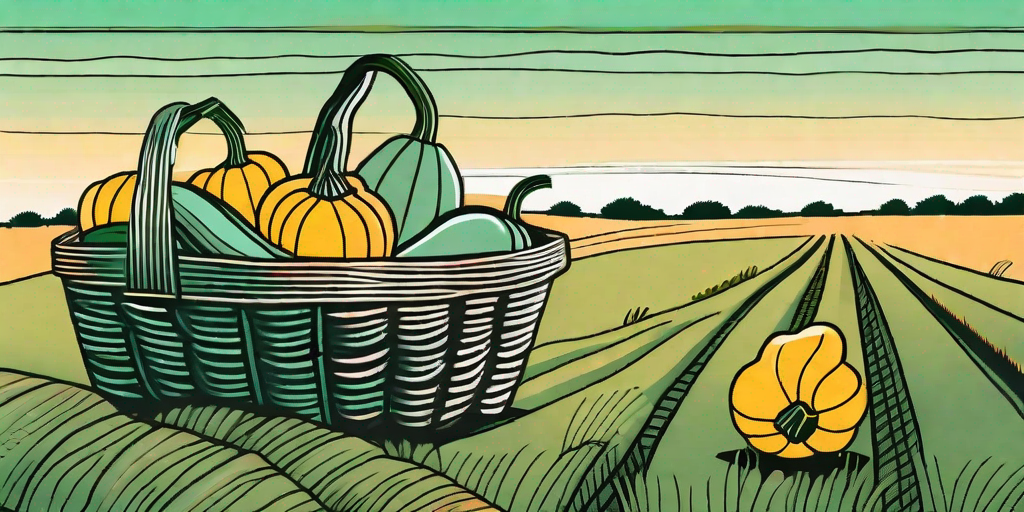
Greetings, fellow squash enthusiasts! If you're reading this, chances are you've got a patch of squash growing in your garden, and you're itching to know when and how to harvest them. Fear not, for you've come to the right place. This comprehensive guide will take you through the ins and outs of squash harvesting, from identifying the perfect time to pick your squash to the best harvesting techniques. So, grab a cup of coffee, sit back, and let's dive into the world of squash harvesting.
Identifying the Perfect Time to Harvest
Like a fine wine, squash has its own perfect time to be harvested. But unlike wine, you can't just look at the label to know when it's ready. Instead, you have to rely on a few telltale signs.
Firstly, check the color. Most squash varieties transform from a bright, shiny color to a duller hue when they're ready to be harvested. For instance, butternut squash turns from a vibrant green to a dull tan color.
Size Matters
Size is another important factor. While it's tempting to let your squash grow into gigantic, fair-worthy specimens, bigger isn't always better. In fact, smaller squash often have a better flavor and texture. As a general rule of thumb, summer squash should be harvested when they're about 6 to 8 inches long, while winter squash should be about 4 to 5 inches in diameter.
However, keep in mind that these are just general guidelines. The ideal size can vary depending on the specific variety of squash. So, it's always a good idea to refer to the seed packet or plant tag for more precise information.
The Stem Test
Another reliable way to determine if your squash is ready for harvest is the stem test. Simply press your thumbnail into the squash's stem. If it's hard to make an indentation, your squash is likely ready to be picked. If the stem is still soft and your nail goes in easily, give it a bit more time.
Remember, patience is a virtue, especially when it comes to squash harvesting. Rushing the process can result in less flavorful squash. So, resist the urge to pick too early and give your squash the time they need to reach their full potential.
Harvesting Techniques
Now that you know when to harvest your squash, let's talk about how to do it. The process is relatively simple, but there are a few tips and tricks that can make it easier and ensure you get the most out of your harvest.
First and foremost, always use a sharp knife or pruning shears to cut the squash from the vine. Pulling or twisting the squash can damage the plant and potentially reduce future yields.
Handle with Care
Squash, especially winter varieties, have a tough exterior, but they can still be damaged if handled roughly. So, always handle your harvested squash with care. Avoid dropping them or stacking them too high, as this can cause bruising or other damage.
Additionally, always leave a bit of stem attached to the squash. This helps to seal the squash and prevent decay. However, be careful not to leave too much stem, as it can puncture other squash during storage.
Post-Harvest Care
Once you've harvested your squash, the work isn't over. Proper post-harvest care is crucial to ensure your squash stays fresh and tasty for as long as possible.
Firstly, clean your squash to remove any dirt or debris. Then, let them cure in a warm, dry place for about 10 to 14 days. This helps to harden the skin and extend the storage life. Once cured, store your squash in a cool, dry place. Avoid storing them in the fridge, as the cold temperature can cause damage.
FAQs
- How long does it take for squash to grow?
- It typically takes about 60 to 100 days for squash to grow from seed to harvest, depending on the variety.
- Can I eat squash that has been harvested too early?
- Yes, you can eat squash that has been harvested too early, but it may not have reached its full flavor potential.
- What can I do with overripe squash?
- Overripe squash can be used in recipes that call for cooked squash, such as soups or stews, where the texture is less important.
Conclusion
And there you have it, folks! Squash harvesting 101 in a nutshell. With these tips and tricks in your arsenal, you'll be a squash harvesting pro in no time. So, get out there and start picking those delicious squash. Happy harvesting!
Remember, the key to a successful harvest is patience and care. So, take your time, handle your squash with love, and enjoy the fruits (or should we say vegetables?) of your labor. After all, there's nothing quite like the taste of a freshly harvested squash. Bon appétit!











